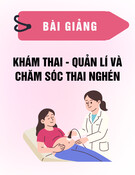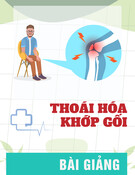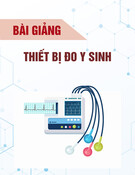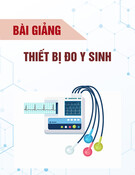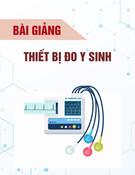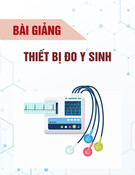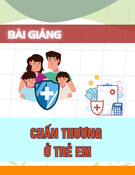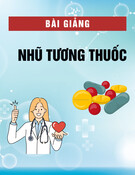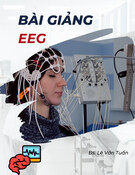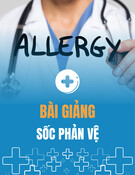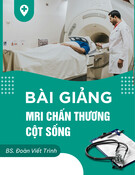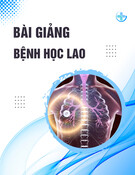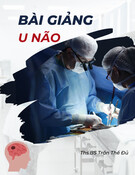Quản lý đa yếu tố nguy cơ trong dự phòng
Đột quỵ thứ phát tối ưu
TS.BS. Hoàng Văn Sỹ
Đại học Y Dược Tp. Hồ Chí Minh
Khoa Nội Tim mạch BV Chợ Rẫy
Gắng nặng đột quỵ trên thế giới
Tỉ suất đột quỵ mới mắc
Tỉ suất đột quỵ lưu hành
800
300
700
281
278
250
715
258
676
256
600
251
250
246
200
221
217
500
546
502
490
400
150
435
393
387
300
360
100
200
50
100
0
0
1990
2005
2010
1990
2005
2010
Tử vong do đột quỵ
140
120
131
117
115
100
105
99
96.5
80
88
60
72.3
61
40
20
0
2005
2010
Age –adjusted per
100,000 patients years
1990
High income
Low/Middle Income Globally
Feigin V et at. Lancet Neurol 2016; 15: 913–2
Tử vong do đột quỵ ở châu Á cao hơn châu Âu
WHO, World Health Organization; DALY, disability-adjusted life year
3
Kim AS & Johnston SC, Circulation 2011;124:314-23
Đột quỵ TMCB ở Việt Nam có tỉ lệ tử vong cao
Nghiên cứu tại BV Đà Nẵng năm 2012
20% Tử vong sau 28 ngày
43,5% Đột quỵ TMCB
BV Đà Nẵng
03/2010 – 02/2011
754 BN Đột quỵ
4
Dịch tễ học
▪ During 66-year follow-up, TIA crude incidence rate was 1.19/1000
person-years.
▪ Over a median of 8.86 years after TIA, 29.8% of participants had a
stroke:
Thiết kế nghiên cứu
▪ US retrospective, population-
based cohort study
(Framingham Heart Study) of
14,059 participants with no
history of TIA, stroke.
▪ Matched cohort analysis:
➢ 21.5% within 7 days.
➢ 30.8% within 30 days.
➢ 39.2% within 90 days.
➢ 48.5% more than 1 year later.
▪ Median time to stroke: 1.64 years.
▪ Adjusted cumulative 10-year hazard for stroke:
➢ 435 participants with first
incident TIA.
➢ 2175 control participants
➢ 0.46 (95% CI, 0.39-0.55) for participants with TIA.
➢ 0.09 (95% CI, 0.08-0.11) for control participants without TIA.
➢ HR, 4.37 (P<.001).
▪ 90-day stroke risk after TIA fell with recency (P for trend=.005):
without TIA.
Main outcome: TIA, stroke.
➢ 16.7% in 1948-1985.
➢ 11.1% in 1986-1999 (HR, 0.60; 95% CI, 0.33-1.12).
➢ 5.9% in 2000-2017 (HR, 0.32; 95% CI, 0.14-0.75).
Lioutas VA, et al. Incidence of Transient Ischemic Attack and Association With Long-term Risk of Stroke. JAMA. 2021;325(4):373-381
Nguy cơ đột quỵ tái phát tăng theo thời gian
Nguy cơ đột quỵ tái phát sau đột quỵ TMCB hay cơn thiếu máu não thoáng
qua (TIA)
a. Coull Aj, et al. BMJ 2004;328:326.
b. Mohan KM, et al. Stroke 2011;42:1489-94
Đâu là yếu tố nguy cơ quan trọng?
The Lancet 2020 3961223-1249DOI: (10.1016/S0140-6736(20)30752-2)
Đâu là yếu tố nguy cơ thời sự?
Đâu là yếu tố nguy cơ thời sự?
Các yếu tố nguy cơ gây đột quỵ tái phát
▪ Nghiên cứu INTERSTROKE: 13.477 bệnh nhân đột quỵ (10,388 TMCB, 3,059 XHNS) điều
chỉnh theo tuổi và giới với 13,472 người chứng không có đột quỵ trong 32 nước
▪ 90.5% gánh nặng đột quỵ được quy cho 10 yếu tố nguy cơ có thể điều chỉnh được
Đái tháo đường
1.16
Uống rượu nhiều
2.09
Nguyên nhân tim mạch
3.17
Hút thuốc lá
1.67
Yếu tố tâm lý
2.2
Tỉ lệ eo/hông
1.44
Chế độ ăn kiêng
0.6
ApoB/ApoA1
1.84
Hoạt động thể lực đều
0.6
Tăng huyết áp
2.98
0
0.5
2.5
1
2
3
3.5
1.5
Các yếu tố nguy cơ đột quỵ tái phát (OR)
O’Donnell, M. J., et al. The Lancet, 2016;388(10046), 761–775.
Phân nhóm yếu tố nguy cơ
•
Smoking- doubles stroke
risk. Risk disappears 2-4
years after quitting
• HTN- most common stroke
risk factor, severe HTn with
increased rish for ICH
• Age >80
• Ethnicity. Black higher
risk compared with
white
• Diabetes- increase
incidence of ischemic stroke
• Sex. Men higher risk
than women with
exception of ages 35-44
and >85
YẾU TỐ
NGUY CƠ
THAY ĐỔI
ĐƯỢC
• Hyperlipidemia
• Heart disease
• Family History
YẾU TỐ
NGUY CƠ
KHÔNG
THAY ĐỔI
ĐƯỢC
– A fib, valve disease,
endocarditis, MI
• Obesity
Kernan WN, Ovbiagele B, Black HR, et al. Guidelines for the prevention of stroke in patients with stroke and transient ischemic attack. Stroke. 2014;45(7):2160-2236.
Phòng ngừa đột quỵ thứ phát
Phòng ngừa thứ phát: các biện pháp làm giảm nguy cơ bị các biến cố mạch
máu tái phát ở bệnh nhân đã bị đột quỵ hay TIA
Thrombosis Canada 2020:
1. Điều chỉnh lối sống
2. Ngưng hút thuốc lá
3. Kiểm soát HA
4. Điều trị chống huyết khối
5. Kiểm soát lipid máu
6. Kiểm soát ĐTĐ
7. Ngưng thở khi ngủ
8. Kiểm soát hẹp động mạch cảnh
9. Kháng đông trong rung nhĩ
10.Kiểm soát lỗ bầu dục (PFO)
Thrombosis Canada 2020 app
Kiểm soát các yếu tố nguy cơ
➢ Thay đổi lối sống
➢ Kiểm soát cân nặng
➢ Kiểm soát huyết áp
➢ Kiểm soát rối loạn lipid máu – nồng độ LDL-C
➢ Kiểm soát đường huyết
Kernan WN, Ovbiagele B, Black HR, et al. Guidelines for the prevention of stroke in patients with stroke and transient ischemic attack. Stroke. 2014;45(7):2160-2236.
Thay đổi lối sống
INTERSTROKE: population attributable risk (PAR)
PAR of several risk factors for stroke in different populations
➢ Giáo dục bệnh nhân
➢ Bỏ hút thuốc lá
➢ Giảm cân
➢ Tập thể dục
➢ Chế độ ăn
Adapted from O’Donnel et al., Lancet 2016
Kiểm soát cân nặng
➢ All patients with TIA or stroke should be screened for obesity
with measurement of BMI (Class I; Level of Evidence C)
➢ Despite the demonstrated benefcial effects of weight loss on
cardiovascular risk factors, the usefulness of weight loss
among patients with a recent TIA or ischemic stroke and
obesity is uncertain (Class IIb; Level of Evidence C).
Kernan WN, Ovbiagele B, Black HR, et al. Guidelines for the prevention of stroke in patients with stroke and transient ischemic attack. Stroke. 2014;45(7):2160-2236.
Tỉ lệ cao rối loạn lipid máu ở người Việt Nam
Woman
Man
Hypertension
Dyslipidemia
Diabetes
Overweight
Low exercise
Smoking
Drinking
Stress
Metabolism Risk Factors
Behavorial Risk Factors
Nguyen NQ et al, 2012, Int J Hyperten 2012 doi:10.1155/2012/560397
Các cơ chế tác động có lợi của Statin đối với đột quỵ
Statin
Giảm LDL
35 đến 80% lợi ích
Cố định mảng xơ vữa:
Đại thực bào
Tế bào cơ trơn
Đáp ứng miễn dịch
Lõi lipid
LDL oxi hóa
Cải thiện chức năng nội mô
Giảm ứng suất lưu biến học máu
Giảm kết tập tiểu cầu
Giảm huyết khối và
Tăng cường tình trạng tiêu sợi
huyết
Protein thần kinh
Giảm áp suất máu
Giảm tỷ lệ mới mắc NMCT
Và huyết khối thành thất trái
. Tăng điều hòa NO
. Cải thiện CBF
. Giảm kích thước ổ
nhồi máu
José Tuñón, José Luis Martín-Ventura, et al. Expert Opin. Ther. Targets (2007) 11(3):273-278
Các nghiên cứu về phòng ngừa Đột quỵ nguyên phát
và thứ phát
Phân tích gộp các thử nghiệm chính về statin
Tácđộngcủacácstatin lênviệcphòngngừađộtquỵthứpháttoànbộ
0,85 (0,73-0,99)
Phòng ngừa đột quỵ thứ phát
11,2
SPARCL 13,1
HPS (bị CVD trước đây) 10,3 10,4
0,99 (0,81-1,21)
0,72 (0,46-1,12) LIPID (bị CVD trước đây) 9,5 13,3
0,68 (0,37-1,25)
CARE (bị CVD trước đây)
13,5
20,0
0,88 (0,78-0,99)
Dưới nhóm: p=0,003 (mức độ dị biệt: l2=0,8%, p=0,39)
Amarenco P & Labreuche J. Volume 8, Issue 5, 2009, 453–463
Tổng: p<0,0001 (mức độ dị biệt: l2=7,3%, p=0,36) 0,82 (0,77-0,87)
Nghiên cứu SPARCL
Đột quỵ hoặc TIA trong ≤ 6 tháng,
không biết CHD, LDL-C 100–190 mg/dL
N = 4731
Phân nhóm ngẫu nhiên
Mù đôi
Atorvastatin 80 mg mỗi ngày
n = 2365 Giả dược
n = 2366
Tiêu chí kết cục chính: Đột quỵ tử vong/không tử vong
Tiêu chí kết cục phụ: Những biến cố mạch vành hoặc tim mạch chính
Theo dõi: ~5 năm (cho đến khi >540 tiêu chí kết cục chính)
Nhồi máu não hoặc TIA ở > 97% bệnh nhân
Pierre Amarenco, et al. N Engl J Med. 2006;355:549-59.
SPARCL: Kết quả tiêu chí chính
Điều trị với Statin liều cao giảm đột quỵ tử vong/không tử vong
16 Giả dược
NNT = 46
bệnh nhân
trong 5 năm 16% RRR*
HR 0.84 (0.71–0.99)
P = 0.03 12
Atorvastatin
8
0
Đột quy
tử vong/
không
tử vong
(%) 4
0 2 4 5 6
3
1
Thời gian từ lúc phân ngẫu nhiên (năm)
*Được điều chỉnh
Amarenco P, et al; SPARCL Investigators. N Engl J Med. 2006;355:549-559.
SPARCL: Tác dụng giảm LDL
Kết cục
Mức LDL (mg/dl)*
Tỷ số nguy cơ (95% CI)
Giá trị P
Đột quỵ
≥ 100
1.00
N/A
70 - 99
1.01 (0.81-1.27)
0.9076
< 70
0.0018
0.72 (0.59-0.89)
Đột quỵ tử vong
≥ 100
1.00
N/A
70 - 99
1.08 (0.52-2.22)
0.8456
< 70
0.1867
0.63 (0.31-1.26)
Nhồi máu não
≥ 100
1.00
N/A
70 - 99
1.00 (0.79-1.27)
0.9941
< 70
0.0003
0.66 (0.53-0.83)
Amarenco P et al. Stroke 2007;38:3198-3204
SPARCL: Tác động của điều trị đối với đột quỵ và TIA
HR* (95% CI)
P
Liệu pháp statin tích cực
Tốt hơn Xấu hơn Kết cục chính
0,84 (0,71–0,99) 0,03 Đột quỵ (tổng số)
0,57 (0,35–0,95) 0,03
Tử vong
0,87 (0,73–1,03) 0,11 Không tử vong
Các kết cục phụ
Đột quỵ hoặc TIA 0,77 (0,67–0,88) <0,001
TIA 0,74 (0,60–0,91) 0,004
0,3 1,0 1,7
Tỉ lệ rủi ro
*Đã được điều chỉnh
Pierre Amarenco, et al. N Engl J Med. 2006;355:549-59.
Những bằng chứng mới
TST
Benefit of a target LDL cholesterol of less
than 70 mg/dL after an ischemic stroke of
atherosclerotic origin
Results of the Treat Stroke to Target trial*
Amarenco P, Kim JS, Labreuche J, Charles H, Giroud M, Mahagne M-H,
Nighoghossian N, Steg PG, Touboul PJ, Vicaut E, Bruckert E on behalf of the
Treat Stroke to Target investigators
*Investigator intiated RCT
Conducted by the Charles Foix Group for Clinical Trial in Stroke (ARO) at Bichat hospital – University of Paris
Supported by the French Neurovascular Society
Funding : PHRC (French government), SOS-ATTAQUE CEERBRALE Association (NPO)
Unrestricted grant : Pfizer Europe, Astra-Zeneca, Merck, Pfizer global (Korea)
Amarenco P, Kim JS, Labreuche J, et al. A Comparison of Two LDL Cholesterol Targets after Ischemic Stroke. N Engl J Med. 2020;382(1):9
Nghiên cứu TST
Study Design
LDL cholesterol 100 ±10 mg/dL (2.5 mmol/L)
1:1
Titration of lipid lowering treatment
Patients with ischemic
stroke or TIA
with evidence of atherosclerosis
LDL cholesterol <70 mg/dL (1.8 mmol/L)
≥3 years
Investigators used statin and dose of their choice in monotherapy or in combination with ezetimide or other drugs
CRAs in the trial unit contacted with patients 3 months before the next visit, making sure they were
treated to the assigned target
Patients and investigators were not maintained blinded but the adjudication committee was fully blinded
Nghiên cứu TST
Study specifications
• Patients were enrolled between March 15, 2010 to
Primary End-Point
• Composite of :
December 31, 2018
– non fatal ischemic stroke or
• We followed-up the patients until one year after last
undetermined stroke
•
– non fatal MI
– Unstable angina followed by urgent
patients included
It was an event driven trial until an accrual of 385
primary endpoints
coronary revascularization
– TIA followed by urgent carotid
• Follow-up visits occurred every 6 months
• The number of center was 61 in France, 16 in Korea
revascularization
(joined the trial in late 2015)
• Trial was stopped on May 25, 2019 after allocated
– and vascular death including sudden
death
funds have been used, with 277 primary
endpoints accrued
• Median follow-up 3.5 years (5.3 years in France,
2.0 years in Korea)
Amarenco P, Kim JS, Labreuche J, et al. A Comparison of Two LDL Cholesterol Targets after Ischemic Stroke. N Engl J Med. 2020;382(1):9
Nghiên cứu TST: mức độ giảm LDL-C
136 mg/dL (3.5 mmol/L)
135 mg/dL (3.5 mmol/L)
<
Statin only 94%
Statin+Ezetimibe 5%
96 mg/dL (2.4 mmol/L)
Statin only 66%
Statin+Ezetimibe 33%
65 mg/dL (1.7 mmol/L)
Amarenco P, Kim JS, Labreuche J, et al. A Comparison of Two LDL Cholesterol Targets after Ischemic Stroke. N Engl J Med. 2020;382(1):9
Tiêu chí chính của nghiên cứu TST
Ischemic stroke or undetermined stroke, myocardial infarction, urgent coronary revascularization
following unstable angina, urgent carotid revascularization following TIA, vascular death
10.9%
22% RRR
8.5%
PRE SPECIFIED COVARIATES
ADJUSTMENTS
. Age
. Sex
. Entry event (ischemic stroke vs. TIA)
. Time from symptom onset to
randomization
. Geographical region (France vs Korea)
(SPARCL trial adjustment)
Adjusted HR = 0.78 [95% CI: 0.61 to 0.98; P value = 0.036]
Amarenco P, Kim JS, Labreuche J, et al. A Comparison of Two LDL Cholesterol Targets after Ischemic Stroke. N Engl J Med. 2020;382(1):9
Non adjusted HR = 0.77 [95% CI; 0.61-0.97; P value = 0.029]
Tiêu chí phụ trong nghiên cứu TST
P Value
Secondary Outcomes
LDL <70 mg/dL
(N=1430)
LDL 100±10 mg/dL
(N=1430)
Hazard Ratio
(95% CI)
myocardial infarction and urgent coronary
20/1430 (1.4)
31/1430 (2.2)
0.64 (0.37-1.13)
0.12*
revascularization
cerebral infarction and urgent carotid and cerebral artery
88/1430 (6.2)
109/1430 (7.6)
0.81 (0.61-1.07)
revascularization
120/1430 (8.4)
139/1430 (9.7)
0.87 (0.68-1.11)
cerebral infarction or TIA
any revascularization procedure (both urgent and
94/1430 (6.6)
99/1430 (6.9)
0.93 (0.70-1.24)
elective)
Carotid
Coronary
Peripheral
vascular death
all cause death
17/94
44/94
33/94
22/1430 (1.5)
88/1430 (6.2)
23/99
51/99
25/99
32/1430 (2.2)
93/1430 (6.5)
0.69 (0.40-1.18)
0.97 (0.73-1.30)
Cerebral infarction or intracranial hemorrhage
103/1430 (7.2)
126/1430 (8.8)
0.82 (0.63-1.07)
Intracranial hemorrhage
Newly diagnosed diabetes
18/1430 (1.3)
103/1460 (7.2)
13/1430 (0.9)
82/14
1.38 (0.68-2.82)
1.27 (0.95-1.70)
Primary outcome or intracranial hemorrhage
133/1430 (9.3)
165/1430 (11.5)
0.80 (0.63-1.00)
* Hierarchical testing stopped
Amarenco P, Kim JS, Labreuche J, et al. A Comparison of Two LDL Cholesterol Targets after Ischemic Stroke. N Engl J Med. 2020;382(1):9
Thông điệp từ nghiên cứu TST
• With the limitation that we had to stop the trial when 277 primary
endpoints were accrued whereas 385 were requested
• This trial shows that after an ischemic stroke with evidence of
atherosclerosis, a target LDL cholesterol of less than 70 mg/dL (1.8
mmol/L) compared to 100 ± 10 mg/dL (2.5 mmol/L), reduced the risk
of subsequent cardiovascular events
• With no significant increase in intracranial hemorrhage
• And no increase in newly diagnosed diabetes
Amarenco P, Kim JS, Labreuche J, et al. A Comparison of Two LDL Cholesterol Targets after Ischemic Stroke. N Engl J Med. 2020;382(1):9
Giảm LDL-C càng tích cực càng tốt
1 mmol/L
(40 mg/dL)
20%
CAD death
17%
Stroke
10%
All-cause
mortality
23%
Major coronary
events
Hướng dẫn phòng ngừa đột quỵ thứ phát
Rối Loạn Lipid Máu
Khuyến Cáo Phân Loại/Mức Độ Bằng Chứng
Phân loại I, Mức độ B
Liệu pháp Statin cường độ mạnh được khuyến cáo để làm giảm nguy cơ đột
quỵ và các biến cố tim mạch ở bệnh nhân bị đột quỵ thiếu máu hoặc TIA do xơ
vữa động mạch và có mức LDL-C ≥ 100 mg/dL kèm hoặc không có bằng chứng
của bệnh tim mạch do xơ vữa (ASCVD) nào khác trên lâm sàng
Phân loại I, Mức độ B
Liệu pháp Statin cường độ mạnh được khuyến cáo để làm giảm nguy cơ đột
quỵ và các biến cố tim mạch ở bệnh nhân bị đột quỵ thiếu máu hoặc TIA do xơ
vữa động mạch và có mức LDL-C < 100 mg/dL kèm hoặc không có bằng chứng
của ASCVD nào khác trên lâm sàng
Phân loại I, Mức độ A
Bệnh nhân bị đột quỵ thiếu máu hoặc TIA và ASCVD đi kèm bệnh khác nên được
xử trí theo hướng dẫn ACC/AHA 2013 về cholesterol, bao gồm sự điều chỉnh lối
sống, các khuyến cáo về chế độ ăn kiêng và các khuyến cáo dùng thuốc
Kernan WN, Ovbiagele B, Black HR, et al. Guidelines for the prevention of stroke in patients with stroke and transient ischemic attack. Stroke. 2014;45(7):2160-2236.
Hướng dẫn phòng ngừa đột quỵ
“Điều trị statin tích cực được khuyến cáo nhằm giảm nguy cơ đột quỵ và biến
cố tim mạch trên BN đột quỵ do thiếu máu cục bộ và cơn thoáng thiếu máu não
”
(Class I; Level of Evidence B)
“ Mục tiêu điều trị giảm ít nhất 50% LDL-C hoặc kiểm soát mức LDL-C < 70
mg/dL giúp mang lại hiệu quả tối ưu cho BN”
(Class IIa; Level of Evidence B)
(New recommendation)
Khuyến cáo điều chỉnh lipid máu trong phòng ngừa thứ phát
Francois Mach, et al. European Heart Journal (2019) 00, 1-78
Nguy cơ tim mạch rất cao
Francois Mach, et al. European Heart Journal (2019) 00, 1-78
Điều chỉnh LDL-C bằng thuốc
Statin vẫn là thuốc đầu tay trong điều chỉnh lipid máu
Francois Mach, et al. European Heart Journal (2019) 00, 1-78
Liều statin trong phòng ngừa thứ phát bệnh tim mạch
do xơ vữa
Cường độ cao
(giảm LDL-C > 50%)
Cường độ trung bình
(giảm LDL-C 30-50%)
Cường độ thấp
(Giảm LDL-C < 30%)
Simvastatin 10 mg*
Atorvastatin 40-80 mg
• Atorvastatin 10-20 mg
Rosuvastatin 20-40 mg
• Rosuvastatin 5-10 mg
Pravastatin 10-20 mg
• Simvastatin 20-40 mg
Lovastatin 20 mg
Fluvastatin 20-40 mg*
• Pravastatin 40-80 mg
Pitavastatin 1 mg*
• Lovastatin 40 mg
• Fluvastatin 40 mg BID
• Pitavastatin 2-4 mg*
*Được phê duyệt để sử dụng nhưng chưa được nghiên cứu trong các thử nghiệm đối
chứng ngẫu nhiên.
Stone NJ, et al. 2013 ACC/AHA Blood Cholesterol Guideline.
Kiểm soát đường huyết
➢ After a TIA or ischemic stroke, all patients should probably be screened for DM with
testing of fasting plasma glucose, HbA1c, or an oral glucose tolerance test. Choice
of test and timing should be guided by clinical judgment and recognition that acute
illness may temporarily perturb measures of plasma glucose. In general, HbA1c may
be more accurate than other screening tests in the immediate postevent period
(Class IIa; Level of Evidence C).
➢ Use of existing guidelines from the ADA for glycemic control and cardiovascular risk
factor management is recommended for patients with an ischemic stroke or TIA who
also have DM or pre-DM (Class I; Level of Evidence B).
Kernan WN, Ovbiagele B, Black HR, et al. Guidelines for the prevention of stroke in patients with stroke and transient ischemic attack. Stroke. 2014;45(7):2160-2236.
Kiểm soát đường huyết
Thử nghiệm IRIS
Kernan WN, et al. N Engl J Med 2016;374:1321-31
Thử nghiệm IRIS
Kernan WN, et al. N Engl J Med 2016;374:1321-31
Thử nghiệm IRIS
Trial design: Patients without diabetes with a history of stroke or TIA within 6 months, with objective evidence of insulin
resistance (HOMA-IR value >3.0), were randomized to either pioglitazone 45 mg or placebo. They were followed for 4.8 years.
Results
(p = 0.007)
➢ The primary outcome, stroke or MI, for pioglitazone vs. placebo: 9.0%
vs. 11.8%, HR 0.76, 95% CI 0.62-0.93, p = 0.007
➢ All strokes: 6.5% vs. 8.0%, p = 0.19; ACS: 5.0% vs. 6.6%, p = 0.11; new-
onset DM2: 3.8% vs. 7.7%, p < 0.001
➢ Bone fracture: 5.1% vs. 3.2%, p = 0.003; weight gain >4.5 kg: 52.2% vs.
%
33.7%, p < 0.0001
Conclusions
➢ Pioglitazone was superior to placebo in reducing the composite of
stroke/MI in patients with recent stroke/TIA, no history of DM2, and
objective evidence of insulin resistance
Primary endpoint
➢ There was an increase in previously described side effects with TZDs,
including bone fractures, edema, and weight gain
Pioglitazone
(n = 1,939)
Placebo
(n = 1,937)
Kernan WN, et al. N Engl J Med 2016;374:1321-31
Tăng huyết áp
➢ Tăng huyết áp góp phần thúc đẩy xơ vữa và là yếu tố nguy
cơ quan trọng nhất của đột quỵ.
➢ 70% bệnh nhân bị đột quỵ có ghi nhận tình trạng tăng
huyết áp
➢ Các yếu tố khác liên quan đến con số huyết áp của bệnh
nhân cũng được chứng minh có mối liên quan với đột quỵ
bao gồm huyết áp trung bình, độ chênh áp, biến thiên
huyết áp và mất trũng huyết áp về đêm.
Kernan WN, Ovbiagele B, Black HR, et al. Guidelines for the prevention of stroke in patients with stroke and transient ischemic attack. Stroke. 2014;45(7):2160-2236.
Tử vong do đột quỵ tăng khi huyết áp càng cao
Phân tích tổng hợp trên 1 triệu
người của 61 nghiên cứu tiền
cứu
Tử vong do đột quỵ tăng theo:
• Tuổi
• Trị số huyết áp
Sarah Lewington, et al. Lancet 2002;360:1903–13.
Lợi ích của điều trị giảm huyết áp đã được khẳng định
•123 nghiên cứu ngẫu nhiên nhóm chứng về điều trị hạ huyết áp
•Ít nhất 1000 bệnh nhân-năm theo dõi mỗi nhánh
•613 815 bệnh nhân
*Epidemiologic studies, not clinical trials of HTN agents.
BP, blood pressure; IHD, ischemic heart disease.
Dena Ettehad, et al. The Lancet, 2016;387: 957-967; DOI: 10.1016/S0140-6736(15)01225-8
Các thử nghiệm về tăng huyết áp sau đột quỵ
Những thử nghiệm lớn về vai trò của kiểm soát huyết áp sau
đột quỵ
➢ Post-stroke Antihypertension Treatment Study (PATS)
➢ 5665 patients with a recent TIA or minor
stroke
(hemorrhagic or ischemic) to indapamide or placebo
➢ The main outcome of recurrent stroke was observed in
44.1% of patients assigned to placebo and 30.9% of those
assigned to indapamid
Kernan WN, Ovbiagele B, Black HR, et al. Guidelines for the prevention of stroke in patients with stroke and transient ischemic attack. Stroke. 2014;45(7):2160-2236.
Các thử nghiệm về tăng huyết áp sau đột quỵ
Những thử nghiệm lớn về vai trò của kiểm soát huyết áp sau
đột quỵ
➢ Perindopril Protection Against Recurrent Stroke Study
(PROGRESS)
➢ 6105 patients with a history of TIA or stroke (ischemic or
hemorrhagic) to active treatment with a perindopril-
base regimen or placebo
➢ Active therapy reduced the primary end point of fatal or
nonfatal stroke by 28%
Kernan WN, Ovbiagele B, Black HR, et al. Guidelines for the prevention of stroke in patients with stroke and transient ischemic attack. Stroke. 2014;45(7):2160-2236.
Dữ liệu từ phân tích gộp
Cochrane Database of Systematic Reviews 2018, Issue 7. Art. No.: CD007858.
Dữ liệu từ phân tích gộp
Cochrane Database of Systematic Reviews 2018, Issue 7. Art. No.: CD007858.
Thuốc hạ áp và mức huyết áp tối ưu
Cochrane Database of Systematic Reviews 2018, Issue 7. Art. No.: CD007858.
Kiểm soát huyết áp ở bệnh nhân có tiền căn đột quỵ
14 nghiên cứu đạt yêu cầu:
• Được xem xét độc lập bởi 2 nhà nghiên cứu
• Thử nghiệm ngẫu nhiên (RCT)
• Điều trị thuốc hạ áp phòng ngừa thứ phát đột quỵ
• Báo cáo trị số HA trong theo dõi
Aristeidis H. Katsanos, et al. Hypertension. 2017;69:171-179
Điều trị thuốc hạ áp giảm nguy cơ đột quỵ tái phát
và tử vong tim mạch
Đột quỵ tái phát
Tử vong tim mạch
Aristeidis H. Katsanos, et al. Hypertension. 2017;69:171-179
Kiểm soát huyết áp tốt hơn nguy cơ đột quỵ thấp hơn
Tỉ lệ đột quỵ thấp hơn khi huyết áp trung bình < 130/85 mmHg
Aristeidis H. Katsanos, et al. Hypertension. 2017;69:171-179
Sự liên quan tuyến tính giữa trị số huyết áp và biến cố
tim mạch trong phòng ngừa thứ phát đột quỵ
Aristeidis H. Katsanos, et al. Hypertension. 2017;69:171-179
Kiểm soát huyết áp ở bệnh nhân có tiền căn đột quỵ
Mauricio Wajngarten, et al. European Cardiology Review 2019;14(2):111–5
Mức huyết áp cần điều trị ở bệnh nhân đã bị độ quỵ
Ngưỡng HATT phòng khám cần điều trị điều trị HATT mmHg
Nhóm tuổi Ngưỡng HATTr ban
đầu cần điều trị THA chung ĐTĐ Bệnh thận mạn BMV Đột quỵ , TIA
18-79 tuổi ≥ 140 ≥ 140 ≥ 140 ≥ 140* ≥ 140* ≥ 90
≥ 80 tuổi ≥160 ≥160 ≥160 ≥160 ≥160 ≥90
≥90 ≥90 ≥90 ≥90 ≥90
* Điều trị có thể được xem xét ở bệnh nhân nguy cơ rất cao có HA BT cao (HATT 130-140 mmHg)
HATT: huyết áp tâm thu; HATTr: huyết áp tâm trương
Ngưỡng
HATTr cần
điều trị
European Heart Journal (2018) 00, 1–98. doi:10.1093/eurheartj/ehy339
Khuyến cáo về mức huyết áp mục tiêu
khi điều trị
Mức bằng
Nhóm
Khuyến cáo
chứng
Khuyến cáo ngưỡng huyết áp mục tiêu là < 130/80 mmHg ở người trưởng
thành THA có:
I
C-EO
- Bệnh tim mạch trên lâm sàng đã biết, hoặc
- Nguy cơ biến cố tim mạch do xơ vữa trong 10 năm ≥ 10%
Với người trưởng thành THA lâu năm nhưng không có dấu hiệu tăng nguy
cơ bị bệnh mạch vành, có thể lựa chọn mức huyết áp mục tiêu < 130/80
IIa
C-EO
mmHg
Whelton PK, et al. 2017 High Blood Pressure Clinical Practice Guideline. JACC 2017.
Ranh giới đích kiểm soát THA*
Ranh giới đích điều trị HATT (mmHg)
Nhóm tuổi
THA chung ĐTĐ Bệnh thận mạn BMV Đột quỵ , TIA Ranh giới
đích điều trị
HATTr
mmHg
<80 đến70
18-64 tuổi
Đích < 140-130
nếu dung nạp
Đích trong
khoảng 130 đến
120 nếu dung
nạp Đích trong
khoảng 130
đến 120 nếu
dung nạp Đích trong
khoảng 130 đến
120 nếu dung
nạp Đích trong
khoảng 130 đến
120 nếu dung
nạp
<80 đến70 ≥ 65 tuổi
Đích < 140 đến
130 nếu dung
nạp Đích <140
đến 130 nếu
dung nạp Đích < 140 đến
130 nếu dung
nạp Đích < 140 đến
130 nếu dung
nạp Đích < 140 đến
130 nếu dung
nạp
<80 đến70 <80 đến70 <80 đến70 <80 đến70 <80 đến70
Ranh giới
đích điều trị
HATTr
Ngoài khuyến cáo đích chung cần xem xét khoảng ranh giới đích vì trong điều trị THA có chứng cứ
hiệu quả điều trị theo biểu đồ đường cong J nhằm bảo đảm an toàn khi hạ thấp HA
European Heart Journal (2018) 00, 1–98. doi:10.1093/eurheartj/ehy339
ESC/ESH 2018
Chiến lược thuốc điều trị THA
Khuyến cáo Loại Mức Chứng
Cứ
I
A
ƯCMC,CTTA, CB, CKC, LT (thiazides/ thiazide-like như chorthalidone và indapamide) có
hiệu qủa giảm HA và các biến cố TM qua các thử nghiệm ngẫu nhiên có đối chứng nên
được chỉ định chính điều trị hạ áp
I
A
Khuyến cáo kết hợp thuốc cho hầu hết bệnh trong điều trị ban đầu, ưu tiên ƯCMC
hoặc CTTA với CKC hoặc LT. Các kết hợp khác trong 5 nhóm chính có thể dùng
I
A
BB kết hợp với các nhóm thuốc chính khác khi có tình trạng LS đặc biệt như đau thắt
ngực, sau NMCT, suy tim hoặc kiểm soát tần số nhịp tim
I A Khuyến cáo điều trị ban đầu ưu tiên 2 thuốc liều cố định. Ngoại trừ người cao tuổi bị
lão hóa,THA độ I có nguy cơ thấp (HATT <150mmHg)
I A Nếu HA không kiểm soát bằng 2 thuốc thì thêm thuốc thứ ba, thường ƯCMC hoặc
CTTA+CKC+LT, ưu tiên liều cố định
I
A
Nếu HA không kiểm soát bởi 3 thuốc, điều trị thêm spironolacton, nếu không dung nạp,
hoặc, lợi tiểu khác như amiloride hoặc tăng liều lợi tiểu khác, chẹn bêta hoặc chẹn alpha
Kết hợp giữa các thuốc ƯCMC+CTTA không khuyến cáo III A
European Heart Journal (2018) 00, 1–98. doi:10.1093/eurheartj/ehy339
ESC/ESH 2018
Chiến lược điều trị thuốc đối với THA
không có biến chứng
1 viên
ƯCMC hoặc CTTA + CKC hoặc Lợi tiểu
Đơn trị khi THA độ I nguy
cơ thấp hoặc rất già >80
tuổi, hôi chứng lão hóa
Điều trị ban đầu.
Kết hợp 2 thuốc
1 viên
ƯCMC hoặc CTTA + CKC + Lợi tiểu
Bước 2
Kết hợp 3 thuốc
2 viên
Tham khảo
chuyên gia về THA
Bước 3
Kết hợp 4 thuốc
THA Kháng Trị
Thêm spironolactone (25-50mg/ngày) hoặc lợi
tiểu khác, chẹn alpha hoặc chẹn bêta
Chẹn Bêta
Xem BB cho ở bất kỳ bước nào khi có chỉ định
dùng như suy tim, đau thắt ngực, sau NMCT, rung
nhĩ, hoặc phụ nữ có kế hoạch hay đang mang thai
ƯCMC: ức chế men chuyển – CTTA: chẹn thụ thể angiotensin II - CKC: chẹn kênh canxi - BB: chẹn bêta ; NMCT: nhồi máu cơ tim
Phác đồ điều trị này cũng thích hợp dùng cho bệnh nhân THA có tổn thương cơ quan đích,
bệnh mạch não, ĐTĐ hoặc Bệnh động mạch ngoại vi
European Heart Journal (2018) 00, 1–98. doi:10.1093/eurheartj/ehy339
ESC/ESH 2018
Tăng huyết áp
SECONDARY PREVENTION
➢ Initiation of BP therapy is indicated for previously untreated patients with
ischemic stroke or TIA who, after the frst several days, have an established BP
≥140 mmHg systolic or ≥90 mm Hg diastolic (Class I; Level of Evidence B).
Initiation of therapy for patients with BP <140 mm Hg systolic and <90 mm Hg
diastolic is of uncertain beneft (Class IIb; Level of Evidence C)
➢ Resumption of BP therapy is indicated for previously treated patients with known
hypertension for both prevention of recurrent stroke and prevention of other
vascular events in those who have had an ischemic stroke or TIA and are beyond
the first several days (Class I; Level of Evidence A)
Kernan WN, Ovbiagele B, Black HR, et al. Guidelines for the prevention of stroke in patients with stroke and transient ischemic attack. Stroke. 2014;45(7):2160-2236.
Tăng huyết áp
SECONDARY PREVENTION
➢ Goals for target BP level or reduction from pretreatment baseline are uncertain
and should be individualized, but it is reasonable to achieve a systolic pressure
<140 mmHg and a diastolic pressure <90 mm Hg (Class IIa; Level of Evidence B).
For patients with a recent lacunar stroke, it might be reasonable to target an
SBP of <130 mmHg (Class IIb; Level of Evidence B)
➢ Several lifestyle modifcations have been associated with BP reductions and are a
reasonable part of a comprehensive antihypertensive therapy (Class IIa; Level of
the
Evidence C). These modifcations include salt restriction; weight loss;
consumption of a diet rich in fruits, vegetables, and low-fat dairy products;
regular aerobic physical activity; and limited alcohol consumption.
Kernan WN, Ovbiagele B, Black HR, et al. Guidelines for the prevention of stroke in patients with stroke and transient ischemic attack. Stroke. 2014;45(7):2160-2236.
Tăng huyết áp
SECONDARY PREVENTION
➢ The optimal drug regimen to achieve the recommended level of reductions is
uncertain because direct comparisons between regimens are limited. The
available data indicate that diuretics or the combination of diuretics and an
angiotensin-converting enzyme inhibitor is useful (Class I; Level of Evidence A).
➢ The choice of specifc drugs and targets should be individualized on the basis of
pharmacological properties, mechanism of action, and consideration of specifc
patient characteristics for which specifc agents are probably indicated (eg,
extracranial cerebrovascular occlusive disease, renal impairment, cardiac disease,
and DM) (Class IIa; Level of Evidence B).
Kernan WN, Ovbiagele B, Black HR, et al. Guidelines for the prevention of stroke in patients with stroke and transient ischemic attack. Stroke. 2014;45(7):2160-2236.
Kiểm soát huyết áp ở bệnh nhân có tiền căn đột quỵ
• Chọn thuốc hạ HA ở bệnh nhân có tiền căn đột quỵ/TIA tương tự các bệnh nhân
THA khác
• Thuốc: ức chế men chuyển, ức chế thụ thể angiotensin, chẹn canxi và lợi tiểu.
• Không có bằng chứng hỗ trợ thuốc nào hiệu quả hơn trong phòng ngừa đột
quỵ thứ phát.
• Chẹn beta không giảm nguy cơ đột quỵ so với UCMC hay UCTT hay chẹn canxi.
• Phối hợp thuốc hay đơn trị liệu tùy theo mức độ tăng huyết áp
• Kết hợp thuốc ưu tiên ức chế angiotensin và chẹn canxi kéo dài
• Thời điểm điều trị
• Sau vài ngày đột quỵ
• Bệnh nhân đang điều trị THA bắt đầu lại sau 3 ngày đột quỵ TMCB hay TIA
Whelton PK, et al. 2017 ACC/AHA/AAPA/ABC/ACPM/AGS/APhA/ASH/ASPC/NMA/PCNA Guideline for the Prevention, Detection, Evaluation, and Management of High Blood Pressure in Adults: A
Report of the American College of Cardiology/American Heart Association Task Force on Clinical Practice Guidelines. Hypertension 2018; 71:e13
Phòng ngừa đột quỵ thứ phát
Kernan WN, Ovbiagele B, Black HR, et al. Guidelines for the prevention of stroke in patients with stroke and transient ischemic attack. Stroke. 2014;45(7):2160-2236.



